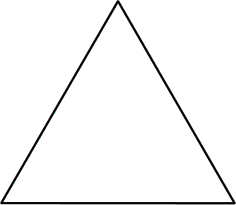 Prolongation of Human Infancy
Prolongation of Human Infancy
Prolongation of Human Infancy.—-Nevertheless, as Professor Butler has recently pointed out, the doctrine of the prolongation of human infancy, which Professor John Fiske has so ably shown to be part of the theory of evolution, was anticipated by Anaximander of Miletus, who flourished about 565 b.c. Professor Butler’s discovery, however, was itself anticipated by Burnet in his Early Greek Philosophy (95, p. 74) by a couple of years. Burnet, after quoting the Theophrastean account of the sp... Video Game Violence is Not Violence
Video Game Violence is Not Violence
In the 1960s, as Bandura conducted his media effects research, the British folklorists lona and Peter Opie spent years observing and studying children's outdoor play. They watched children play games—many of them made up—with names like Underground Tig and Witches in the Gluepots and concluded, "A true game is one that frees the spirit. It allows no cares but those fictitious ones engendered by the game itself." When children commit to the games, they opt out of the ordinary world and "th... IDIC - Infinite Diversity in Infinite Combinations
IDIC - Infinite Diversity in Infinite Combinations
IDIC basically states that we should delight in the differences amongst people, not hate people because they are different. It seems that the human race has found a large number of ways to hate (different sex, color, religion, nationality, political party, social class, etc) and has emphasized hate over co-operation, caring, and compassion. The result has been a world torn by big and small wars, religious and philosophical differences, and alienation of one person from another.
This has take...A good overview of the Vulcan philosophy from Star Trek.
 An Early Passage on Taxonomy
An Early Passage on Taxonomy
NATURE, by descending gradually from great to small, from strong to weak, coun|terbalances every part of her works. Attentive solely to the preservation of each species, she creates a profusion of individuals, and supports by numbers the small and the feeble, whom she hath left unprovided with arms or with courage. She has not only put those inferior animals in a condition to perpetuate and to resist by their own numbers, but she seems, at the same time, to have afforded a supply to each by m...The ability to distinguish and categorize species based on more and more minute differences, and yet be able to group them into larger categories as well.
 Language is Alive
Language is Alive
Language is simply alive, like an organism. We all tell each other this, in fact, when we speak of living languages, and I think we mean something more than an abstract metaphor. We mean alive. Words are the cells of language, moving the great body, on legs. Language grows and evolves, leaving fossils behind. The individual words are like different species of animals. Mutations occur. Words fuse, and then mate. Hybrid words and wild varieties or compound words are the progeny. Some mixed word...It evolves, leaves fossils, speciates, etc.
 Applied History of Technology
Applied History of Technology
Ravna had known that “jumpstarting” technology must be a topic in the ship’s library. It turned out the subject was a major academic specialty. Besides ten thousand case studies, there were customizing programs and lots of very dull-looking theory. Though the “rediscovery problem” was trivial in the Beyond, down in the Slow Zone almost every conceivable combination of events had happened. Civilizations in the Slowness could not last more than a few thousand years. Their collapse was...An academic field for a galactic civilization in which they study the technological advancement of different species on different planets. Includes the concept of "jumpstarting," where a civilization is given more advanced technology, similar to the concept of "leapfrogging" for third world countries on Earth.
 Barriers that Keep Different Species from Interbreeding
Barriers that Keep Different Species from Interbreeding
What keeps members of two related species from mating with each
other? There are many different reproductive barriers. Species might not
interbreed simply because their mating or flowering seasons don’t overlap.
Some corals, for example, reproduce only one night a year, spewing
out masses of eggs and sperm into the sea over a several-hour period.
Closely related species living in the same area remain distinct because
their peak spawning periods are several hours apart, preventing eggs
of on...Different pheremones, blooming times, geographical isolation can keep members of two different species from breeding.
 The Biological Species Concept (BSC)
The Biological Species Concept (BSC)
And when we think of why we feel that brown-eyed and blue-eyed
humans, or Inuit and !Kung, are members of the same species, we realize
that it’s because they can mate with each other and produce offspring
that contain combinations of their genes. In other words, they belong
to the same gene pool. When you ponder cryptic species, and variation
within humans, you arrive at the notion that species are distinct
not merely because they look different, but because there are barriers
between them ...A species is defined by the fact that its members can breed with one another.
 Postmating Competition
Postmating Competition
Sexual selection doesn’t end with the sex act itself: males can continue
to compete even after mating. In many species, females mate with more
than one male over a short period of time. After a male inseminates a
female, how can he prevent other males from fertilizing her and stealing
his paternity? This postmating competition has produced some of the
most intriguing features built by sexual selection. Sometimes a male
hangs around after mating, guarding his female against other suitors.
Wh...Various evolutionary strategies males of different species keep a female from mating with other males after sex.
 Speciesization in a Test Tube
Speciesization in a Test Tube
We can even see the origin of new, ecologically diverse bacterial
species, all within a single laboratory flask. Paul Rainey and his colleagues
at Oxford University placed a strain of the bacteria Pseudomonas fluorescens
in a small vessel containing nutrient broth, and simply watched
it. (It’s surprising but true that such a vessel actually contains diverse
environments. Oxygen concentration, for example, is highest on the
top and lowest on the bottom.) Within ten days—no more than a few
...Bacteria evolve into different species in order to adapt to the different environments at the bottom and top of a test tube.




